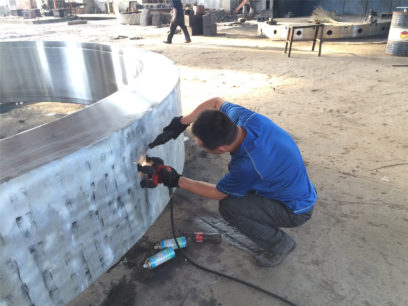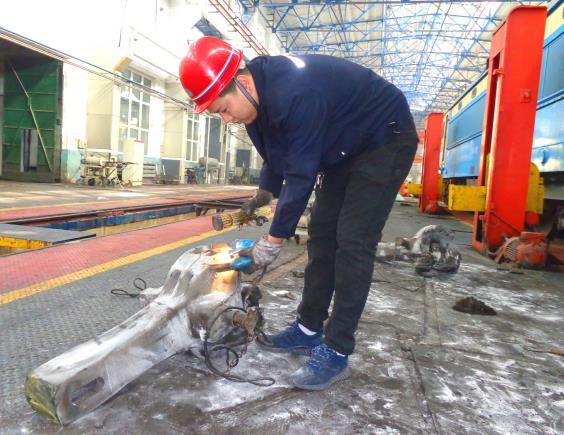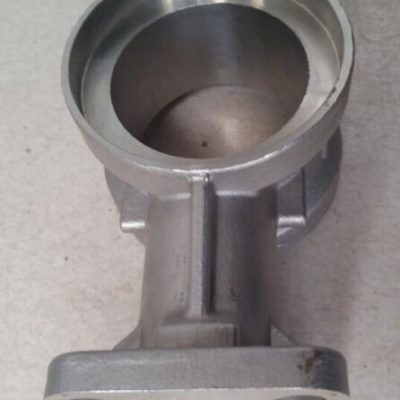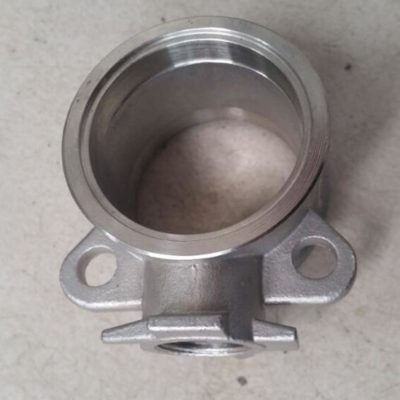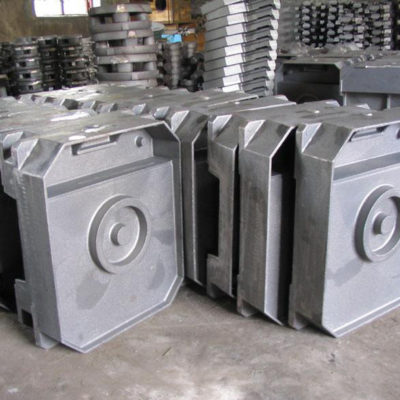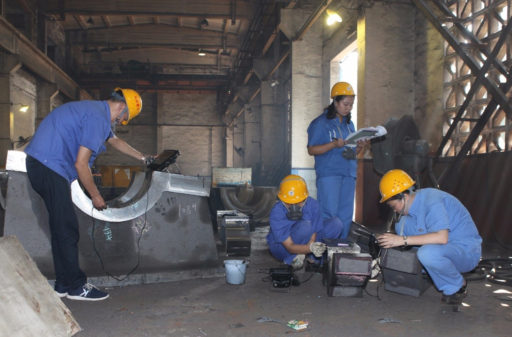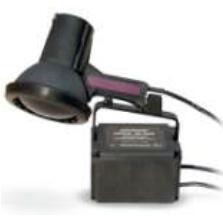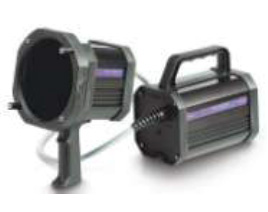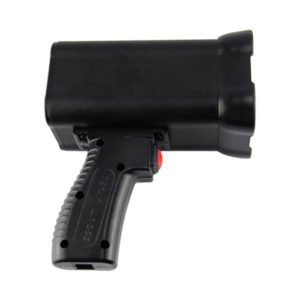1. Magnetic particle inspection related tools
Yoke type magnetic particle flaw detector, ndt uv lamps, watering can, wire tray, strip, measuring cup, glass rod, steel casting test piece, test block, etc.
2. Preparation before magnetic particle inspection
1) Power supply preparation
Prepare enough power cords and do not pull the power cord that is connecting the yokes. When using fluorescent magnetic powder for flaw detection, use a high-intensity led NDT UV lamps (S4020-6K hand-held uv lamp is recommended). When doing non-fluorescent magnetic powder inspection, observation is carried out under visible light. Make sure that the illuminance of visible light on the surface is bright (not less than 500 lx).
2) Tools calibration
Before use, first confirm the integrity of the tools, whether the electromagnetic yoke is energized, whether the UV NDT lamp (led black light) is shining or not. Lifting force verification AC yoke should be no less than 45N (equivalent to 4.6kg) lifting force, DC yoke should have a lifting force of 177N (equivalent to 18.1kg), and the lifting force of the electromagnetic yoke should be checked at least once every six months.
The sensitivity check determines the model of the sensitivity test piece or test block according to the relevant standards for verification. Generally, the A1-30/100 standard test piece should be selected for magnetic particle inspection. Now use the A-type sensitivity test piece as an example to introduce the test piece. First use double-sided tape on the edge of the test piece, and do not stick to the artificial groove. Then, the side of the test piece with the artificial groove is closely attached to the flaw detection surface. Select the appropriate magnetization and display method for inspection. If the total length of the magnetic trace displayed on the test piece reaches 75% or more of the circumferential length of the artificial groove within the entire effective range of the orientation magnetization, it is considered that the sensitivity requirement of the test piece reaction is satisfied.
3) Treatment before surface inspection of steel castings
Before the magnetic particle inspection, the surface of the inspection area should be cleaned of grease, sand, sand, oxide skin, paint and other materials that interfere with magnetic particle inspection and magnetic mark identification. If the surface of the workpiece is left with a coating, when the coating thickness is uniform and If it does not exceed 0.05mm and does not affect the test results, it may be coated with magnetic powder for testing with the consent of the parties to the contract. For rough cast steel parts, sanding, shot peening, etc. are required to improve the surface roughness. The dry test shall keep the surface of the cast steel piece dry and the wet method to ensure that the surface is free of oil.
4) Basic methods for magnetic particle inspection of cast steel parts
- Selection of magnetic powder: Wet magnetic particle testing mainly uses fluorescent magnetic powder or magnetic paste and water to form magnetic suspension. The minimum particle size of fluorescent magnetic powder is sensitive to small cracks, but the roughness is high. If the roughness is too high, the magnetic marks have many fakes. The particle size of the magnetic paste type magnetic powder is slightly larger than that of the fluorescent magnetic powder, and the roughness requirement is relatively small, but the sensitivity is much higher than that of the dry magnetic powder. The hairy surface can be detected by dry magnetic powder or magnetic paste wet method. The processed surface can be detected by fluorescent magnetic powder and magnetic paste wet method.
- Selection of magnetic powder: Mainly according to the requirements of the demand side and surface roughness. When spraying dry magnetic powder, the principle of uniform thin and thin covering should be applied to spray the wet magnetic powder evenly and ensure that the suspension can adhere to the surface of the workpiece. It is required to prepare a magnetic suspension for each 100 mm magnetic paste and 1 L of water. Fluorescent magnetic powder is mixed into magnetic suspension with 7 to 10 mL of magnetic powder powder and 1 L of water.
- The yoke’s turned on and off during operation: The yoke method is energized for less than 5 seconds. If the power is applied too long, the yoke coil will heat up, and even if it is blown, it should be controlled for 2 to 3 seconds. When the wet method is used, the carrier is water. In order to facilitate the flow of the magnetic powder particles, the energization time is slightly longer but not more than 5 seconds. Each yoke magnetic particle flaw detector should not be used for more than half an hour. If the workload is large, it can be used continuously.
- Dry magnetic particle testing method: Suitable for flaw detection of steel casting blank surface is effective for large crack detection due to its large particle size.
- Wet magnetic particle inspection method: It is generally displayed by continuous method wet method. In combination with our actual situation, the workpiece should be wetted before magnetization, and it can be wiped with a wet rag to ensure that the sprayed magnetic suspension can be evenly covered on the surface of the workpiece, while magnetizing. The magnetic suspension is applied by spraying. The magnetic suspension should be able to flow slowly over the surface of the test. In order to avoid accumulation of the magnetic suspension in the pit, the steel casting can be tilted.
- Magnetic mark display: After the application of the magnetic suspension, one or two more magnetizations should be performed. Before magnetization, wetting the inspection surface with magnetic suspension also helps to quickly display the defect magnetic trace. When verifying each crack defect, the first detected magnetic trace should be erased and confirmed to prevent misjudgment.
- Demagnetization: Prevent the occurrence of residual magnetism. Generally, the magnetic powder is inspected before heat treatment. There is no special requirement for the cast steel parts without deliberate demagnetization.
5) Maintenance of instruments and tools
The on/off time of the yoke magnetic particle flaw detector should be strictly in accordance with relevant standards to ensure its service life. It is strictly forbidden to pull hard and pull hard to ensure light handling. When sandblasting fluorescent magnetic powder, pay special attention not to spray on fluorescent lamps to prevent explosion. The ultraviolet rays leaking after bursting are harmful to the human body. After the work is completed, all tools should be placed neatly and placed in place.
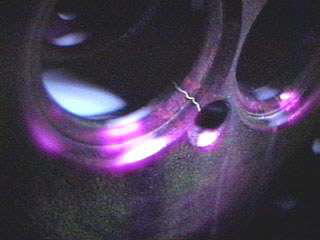
1. 100w or 125w high-pressure mercury lamp type NDT UV lamp:
This type has a start-up time of 5-10 minutes, UV intensity of 2000-5000uw/cm2, lamp life of about 1000 hours, and lamp price is around USD100~250. Disadvantages: slow start-up time, short lamp life, high surface temperature, easy cracking of the filter, and high maintenance costs. Representative models are SB-100P/F, FC-100 ZB-100, etc. The advantage is that the bulb and the color filter are frequently replaced, and other components rarely fail.
2. 35w hid high-intensity NDT UV lamp:
This lamp has a significantly faster start-up time, about 15 seconds, high UV intensity, and lamp life of about 3000 hours. Disadvantages: Circuit board components are easily broken down in the luminaire, and the maintenance cost of the circuit board is high. Although the life of the DUV-35W UV bulb is up to 3000 hours, the single purchase cost is more than USD320, so the maintenance cost of this category is higher. Representative models are PS135, ML-3500, etc.
3. Led NDT UV Lamp:
UV led flaw detection lamp uses the latest technology of high-power UV led, low power consumption, high intensity UV output, 12w led flaw detection lamp UV intensity has exceeded the traditional 100w flaw detection lamp, the light source life of up to 50,000 hours. Disadvantages: The purchasing cost is relatively high.
Interested in the Led NDT UV lamps? Check out the advantages of led UV-A lamps compared with mercury vapor lamps here.

